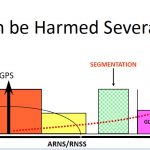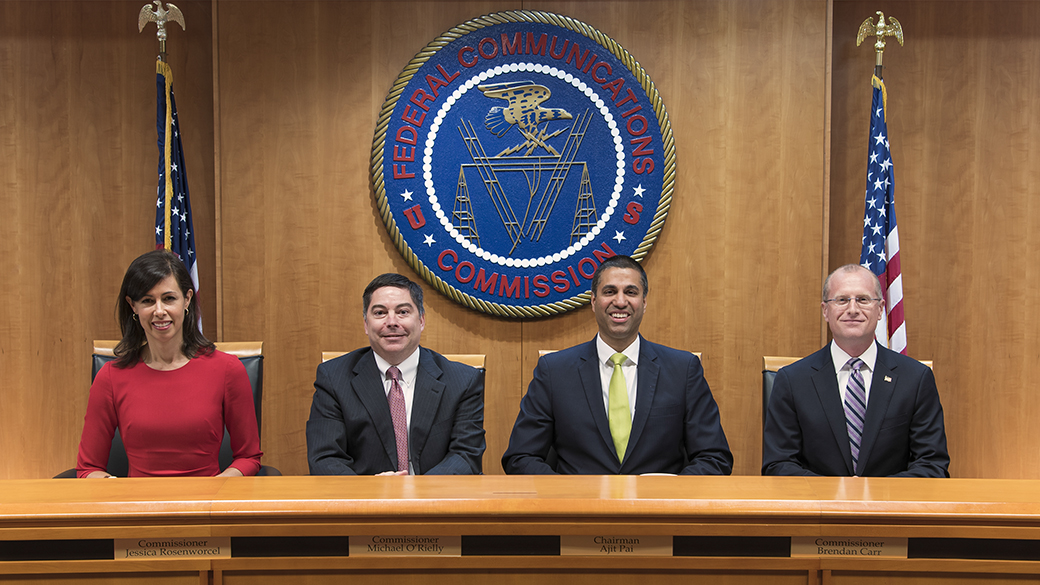 Prof. David Last
Prof. David LastThe U.S. government appears to be closing in on a decision about whether to revive plans for an enhanced Loran (eLoran) system, as a backup for the position, navigation, and timing (PNT) information provided by GPS signals.
The U.S. government appears to be closing in on a decision about whether to revive plans for an enhanced Loran (eLoran) system, as a backup for the position, navigation, and timing (PNT) information provided by GPS signals.
A study launched by the interagency group coordinating GPS-related policy has been weighing options since last fall after two members of Congress sent pointed letters asking about the lack of progress on establishing a GPS backup (details here). Although what the group’s recommendation will be remains unknown, experts following the discussions tell Inside GNSS that eLoran has emerged, as broadly expected, as the best choice and would most likely be run by a public-private partnership (PPP).
Although the PPP idea has been on the table for years, a new player has emerged and is already exploring running an eLoran service, sources confirmed. The government is actively crafting a cooperative agreement to enable this unnamed company and perhaps others, if they should step forward, to demonstrate the system to prospective customers.
The process is playing out within the context of escalating threats to PNT signals and concerns over cybersecurity plus a rapidly changing international environment. GPS jamming by North Korea had already raised interest in eLoran system within the Pentagon, which launched a search in January for companies able to supply some 50,000 eLoran receivers. (details here). Now some key U.S. allies are planning to close down their eLoran infrastructure while other, less-friendly nations — including Russia — are moving to upgrade their eLoran-type systems.
Although the outcome of the U.S. deliberations on a national system would appear to be a separate issue from overseas eLoran developments, the two are actually closely linked, experts insist. If the United States fails to go ahead with its own eLoran, they said, other nations will drop their transmitters — including NATO countries whose systems could be important in ongoing areas of conflict.
“Whether countries like it or not, the U.S. is kind of the de facto PNT leader, even if we don’t have an eLoran system up,” asserted UrsaNav president and CEO Chuck Schue. “There is no doubt in the global community that if the U.S. moves forward with eLoran, other folks will as well. There’s no doubt about that. If the U.S. does not move forward with eLoran; will that stop some countries? Yeah, it probably will.”
Why eLoran?
The proposal for eLoran in the U.S. would update old Loran C sites, which are still owned by the federal government, to broadcast a powerful, ground-based signal that uses a completely different frequency from GPS. Both systems are synchronized with Coordinated Universal Time (UTC); however, eLoran’s synchronization is handled through different channels, thus eliminating a common point of failure between the two.
Although eLoran does not provide a vertical dimension to its positioning, it can provide 2-D (horizontal) capabilities with a demonstrated accuracy using differential corrections of around seven meters while providing a seamless backup for precise timing. As designed, the enhanced Loran system is also far less labor-intensive to maintain and can broadcast a data channel that has the potential to deliver emergency messages and provide signal authentication.
But eLoran is more than a backup. Its signals are able to reach areas that the far-weaker GPS signals cannot — building interiors, urban canyons, underground computer rooms, forest depths, and even underwater installations.
Given its capabilities, and the fact that the annual estimated cost for running a nation-wide eLoran system is a relatively modest $50 million, the PNT community came to consensus years ago that eLoran was the best backup for GPS. That was before the Obama administration canceled eLoran in 2010, ostensibly as a budget-reduction move.
A number of the old Loran-C stations have been dismantled since then. Congress put a stop to the teardowns in 2014 with a bill ordering the U.S. Coast Guard, which ran the original Loran system and remains responsible for the sites, to stop taking them apart until a final decision on eLoran could be reached.
That was followed by the congressional letters — and the feds have been ruminating on the issue ever since.
The primary hang-up, as previously reported, has been determining which agency will take responsibility for the system. From the agencies’ point of view that means who gets stuck with the bill. Their anxieties are well founded. Congress has a habit of handing agencies tasks without giving them the money to do the job, and no department has been willing to step forward and risk a fiscal hit.
Pressure Mounts in the U.S.
In the years since the demise of the original eLoran plan, the number of GNSS jamming incidents has been mounting. In the two most widely publicized incidents affecting operations at the Newark airport, truckers were caught with small jammers that hampered the operation of the facilities’ air traffic equipment. It took years for officials to figure out that the intermittent interference in the first case was being caused by a jammer-equipped vehicle. The second case was resolved more quickly and in 2013 trucker Gary P. Bojczak was handed a $32,000 fine.
GPS jammers are also hampering operations at the nation’s ports. Dozens of incidents have occurred in which jammers had been placed in shipping containers to mask the location of stolen goods, according to the FBI. In 2014 a jammer shut down two automated cranes when it caused them to lose their lock on the GPS signal. Brett Rouzer, chief of Maritime Critical Infrastructure and Key Resources Protection at the Coast Guard’s Cyber Command, told a conference early this year that the two cranes were down for seven hours and the operation of two other cranes was degraded.
The crane incident, which Coast Guard speakers at a separate March conference on marine cybersecurity hinted also occurred in the New Jersey area, was caused by another jammer-toting trucker, according to Coast Guard Rear Admiral Marshall B. Lytle. Lytle has been tapped to lead implementation of the Coast Guard’s new cybersecurity initiative that, although still not officially released, appears to encompass interference with the GPS signal. The Coast Guard is also the designated contact point for reports of GPS interference, according to a best-practices guide on improving robust timing and frequency sources issued in January to critical infrastructure owners and operators by the Department of Homeland Security (DHS).
Coast Guard in the Lead?
Given its emerging cybersecurity role and prior experience as managers of Loran-C, the Coast Guard appears to be the agency most likely to land the job of managing the government’s side of an eLoran PPP — although other agencies such as the Department of Transportation (DoT) or DHS might still be tapped.
“They (the Coast Guard) obviously have done it before. They obviously are a military organization; so, they know how to protect [the system],” said Schue, who further noted the agency’s technical and contracting expertise.
As for the private sector participants in a possible PPP, Schue said his firm had joined forces with another company to pursue the opportunity but would not take the lead. Schue declined to name the other company, as did an independent source who had spoken with the new player about its plans.
“We thought it would be better if another company did it, so it’s not ‘Here’s those UrsaNav guys again,’” Schue told Inside GNSS. “We need to make sure that folks see that we’re not the only ones that are interested or that understand that this is a problem that we need to do something about.”
UrsaNav had been in the middle of a cooperative research and development agreement (CRADA) with the Coast Guard testing the use of eLoran for timing synchronization when the Loran system was shut down. Schue said the government is now working on a new CRADA to enable the private sector to demonstrate eLoran to potential customers.
DHS is leading the CRADA effort, he said. Now that the kerfuffle over the agency’s 2016 budget has been resolved, he is optimistic an announcement of the CRADA would be seen in the Federal Register as early as May 1. [Upate: the notice appears on March 23.] Although Schue did not know if the Coast Guard, which is part of DHS, would be involved, it seems likely as the agency still manages the Loren-C sites, some of which would be activated under the agreement.
Most of the customers are expected to be interested in eLoran as a backup for timing data. Precise timing is essential to maintaining the function of the power grid, the Internet, cell phone networks, and other infrastructure such as the nation’s financial systems.
The interest in the United States is coming from telecommunication providers and from broadcasters, said radionavigation expert David Last. “It’s coming from people who are pushing bits around and [for whom] the standards required of them are going up and up, and their need to acquire timing indoors is increasing.”
The CRADA enables the private sector partners to directly demonstrate Loran’s advantages to potential customers using signals from the remaining U.S. sites. Although UrsaNav has data from its work overseas, which indicates eLoran is more than capable of supporting the timing needs of the new 4G LTE networks, U.S. customers want to see results using the U.S. system, said Schue.
“Even though the system and the performance is absolutely transferable, we understand that we need to convince our telecoms and our electric power grid [operators] and our financial markets. We need to be able to show them on our turf, with our stuff here, that they can get the very same results with the technology said Schue. “It’s a very objective and transparent way of presenting real results on air with real signals, which is always better than slide-ware and papers and studies.”
New Opportunities, Worries
A robust eLoran system offers users more than just a backup capability, noted Last. The system’s ability to penetrate inside buildings is a huge a financial advantage to companies, like telecom operators, when they need to get precise timing data indoors.
Telecoms, which currently synchronize much of their networks with GPS, are increasingly putting cellphone base stations inside malls and other buildings, he said. As things stand, they currently have to run an antenna up to the roof to get the GPS signal. In a large building, however, the demand for sky access for antennas and receiving dishes makes rooftops prime real estate. Getting an antenna on top of the building can cost a firm some $5,000 a year, said Last.
“If you have a tall building with a huge number of occupants and you want a space on the roof, you pay through the nose for it,” said Last. “Now eLoran delivers that timing indoors at ground level, even under the ground.”
Last works with the General Lighthouse Authority (GLA), which manages the eLoran system for the United Kingdom and Ireland. The GLA announced an initial operating capability for their eLoran network just last October. But now that network — in fact, the entire European network — is in jeopardy.
“As things stand in Europe,” Last said, “eLoran will cease to exist after the 31st of December because the French and the Norwegians will switch off their stations.”
The European network consists of nine broadcasting stations: one each in the U.K., Denmark, and Germany; two in France, and in four in Norway. Not only have Norway and France announced they will turn off their stations; France has made it clear it intends to dismantle their installations. Sites for eLoran are carefully placed; once gone, the network will be difficult to reconstitute.
Moreover, explained George Shaw, principal development engineer with the GLA, the French and the British subsidize the station in Denmark; so, if France pulls out, the Danish stations future is also in jeopardy.
Without signals from at least three transmitters to enable eLoran’s trilateration-based positioning, said Shaw, the United Kingdom with its one station, will only be able to provide precise timing — and that will be limited. Losing the transmitters, he said, “could potentially be the end of the option for eLoran in Europe.”
And losing the European network could come at a particularly ticklish time.
Russia and the Ukraine
The Russians, said both Shaw and Last, are upgrading their Chayka system, which is similar to Loran, into an enhanced or eChayka. And they are doing something similar, they said, with the military version of their network.
A story in OE Watch, an informational publication from the Defense Department’s foreign military studies office that summarizes foreign press articles, said in September 2013 that the Russians were replacing their RSDN-10 [Long Distance Radio Navigation Station] ground-based, long-range navigational radar systems with new Skorpion systems.
The story cited a report from the Russian newspaper Izvestiya saying Skorpion was designed to replace signals from GLONASS, the Russian GNSS system, if they were suppressed during a conflict. Skorpion transmitters, it said, will be able to provide coverage over 1,000 kilometers, are easier to operate, and can be synchronized with GLONASS.
“The commissioning of the Skorpion will take place in four stages,” OE Watch reported. “Three systems of the Transbaykal circuit will be replaced in 2013–15, four systems of the North Caucasus chain in 2016–17, four in the Far East in 2017–19, and three systems in the South Urals circuit in 2019–20.” New receivers able to use GLONASS, GPS, RSDN, and Skorpion are also being delivered to the Russian Army.
“The replacement of ground systems is conditioned firstly,” wrote OE Watch, “by the need to ensure national security in respect of radio-navigation.”
The eChayka network also provides coverage over Ukraine and the Baltic states, explained Shaw, an area that is not covered by the current European eLoran system. That can be changed, however, if the current European network were to be expanded.
Shaw gave a presentation to NATO in December that showed how the European system could be extended to cover Eastern Europe and beyond into Turkey. Moreover, he told defense officials, that a transportable, rapidly deployable, tactical eLoran has already been demonstrated. But expanding Europe’s eLoran network will not be possible, he noted, if France and Norway pull out.
The U.S. Decision
Last said he believed there was increasing pressure in Europe from the defense communities to act with regard to eLoran.
“The question is,” said Last, “whether we’re going to have an Eastern Europe with a clear fallback to an eLoran-type system, and Western Europe switching its off.”
“It is my understanding, from what I’ve heard,” agreed Schue, “that our DoD and other MODs — ministries of defense in other foreign, friendly countries — have been talking amongst themselves about vulnerabilities of systems, how to overcome or mitigate those vulnerabilities, (and) what would be the best alternative. And eLoran continually comes up and is continually supported in those communities.”
The real support needs to come from the United States, however, said Shaw, in the form of support for it’s own eLoran network.
“We’re very keen that France and Norway see that this is an important system to protect and preserve and that there is actually a wider interest in it across the world,” he said, adding, “The U.S. is very influential, and if the U.S. is going to stand up and say, ‘We’re bringing eLoran back’ — that in itself would be a very powerful message, especially to our friends in Norway.”





